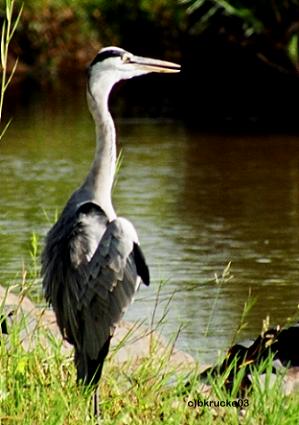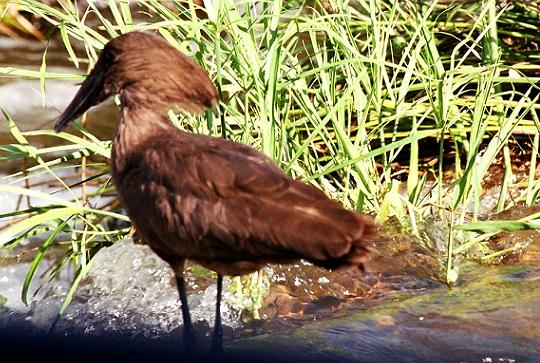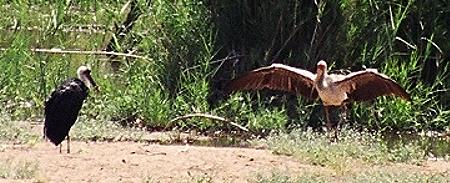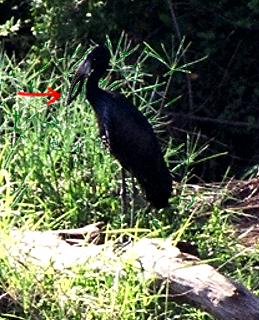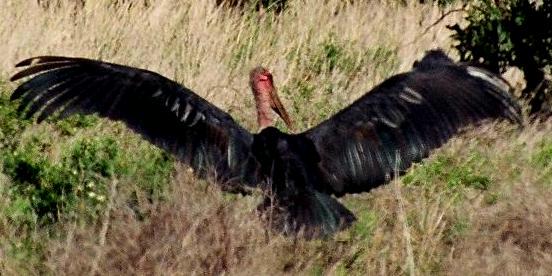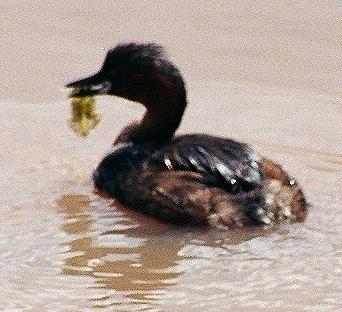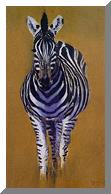For the last Kruger birds, I've chosen some that are found near water mostly.
First is the gray heron.
Then the hammerkop. You can see why he's called a hammer head.
They stand like that for hours waiting to catch fish that come by in the rushing water. They
build huge messy nests out of large sticks.
The next two pictures are of birds that you don't see very often, but I'm
not proud of the photos. They were too far away, but since they are rare.................
Wooly necked storks
and the open-billed stork. I've marked where you can see through his
bill--that's how it looks when it's closed--I don't know how it's able to eat. You'd think things would fall out.
This is an experiment in a sort of mural photo. It's way wider than an
email so may mess everything up. But nothing ventured, nothing gained. These are some
more marabou storks. We saw great numbers of them in several places.
And here's one with his wings spread. Their wing span is well over 2
meters--nearly 8 feet. You can see the bare head for scavenging. They are more of a
vulture, even though they are called storks.
Another weak picture--too far away again, but I wanted you to see one of my
favorites--the dabchick. It's a teeny grebe, sometimes called the little grebe, and is cute
as a button. It's only 7 or 8 inches/20cm long.
On to Phalaborwa!
